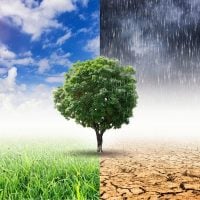The International Union for Conservation of Nature (IUCN) Red List is a critical tool in the global effort to conserve biodiversity. Established in 1964, it serves as a comprehensive inventory of the conservation status of various species worldwide. The Red List not only highlights species that are at risk of extinction but also provides essential data that informs conservation strategies and policies.
By categorizing species based on their risk levels, the Red List raises awareness about the plight of endangered species and the urgent need for conservation action. It acts as a call to arms for governments, NGOs, and individuals alike, galvanizing efforts to protect our planet’s rich biodiversity. Moreover, the IUCN Red List plays a pivotal role in guiding funding and resource allocation for conservation initiatives.
By identifying species that are critically endangered or vulnerable, it helps prioritize conservation efforts where they are most needed. This prioritization is crucial in a world where resources are often limited and competing interests vie for attention. The Red List not only serves as a barometer of biodiversity health but also as a strategic framework for conservationists to rally support and mobilize resources effectively.
In essence, the IUCN Red List is not just a catalog of species; it is a vital instrument for fostering global awareness and action towards biodiversity conservation.
How Species are Assessed and Categorized
The assessment process for the IUCN Red List is rigorous and systematic, involving a comprehensive evaluation of various factors that influence a species’ survival. Species are assessed based on criteria such as population size, geographic range, habitat quality, and the degree of threat they face from human activities or environmental changes. The assessments are conducted by experts in the field, including taxonomists, ecologists, and conservation biologists, who utilize the best available scientific data to determine a species’ status.
This collaborative approach ensures that the assessments are grounded in robust scientific evidence and reflect the most current understanding of each species’ situation. Once assessed, species are categorized into different threat levels: Least Concern, Near Threatened, Vulnerable, Endangered, Critically Endangered, Extinct in the Wild, and Extinct. This classification system provides a clear framework for understanding the urgency of conservation needs.
For instance, a species classified as Critically Endangered requires immediate intervention to prevent extinction, while those listed as Least Concern may still benefit from monitoring to ensure their populations remain stable. The categorization process is dynamic; as new data emerges or conservation efforts yield results, species can be re-evaluated and their statuses updated accordingly. This adaptability is crucial in responding to the ever-changing landscape of biodiversity and conservation challenges.
The Impact of the Red List on Conservation Efforts
The IUCN Red List has far-reaching implications for conservation efforts globally. By providing a standardized framework for assessing species’ risk levels, it enables organizations and governments to make informed decisions about where to focus their conservation resources. For example, countries may use Red List data to develop national biodiversity strategies or to prioritize areas for habitat protection.
The list serves as a reference point for policymakers, helping them understand which species are most at risk and require immediate attention. Additionally, the Red List fosters collaboration among various stakeholders in the conservation community. NGOs, government agencies, and academic institutions often work together to address the challenges faced by threatened species identified on the list.
This collaborative spirit can lead to innovative solutions and more effective conservation strategies. For instance, partnerships between local communities and conservation organizations have been instrumental in protecting habitats for endangered species like the Amur leopard in Russia and China. By leveraging the data provided by the Red List, these partnerships can create targeted interventions that address both ecological needs and socio-economic factors affecting local populations.
Success Stories: Species Recoveries and Conservation Achievements
The IUCN Red List is not just a record of species at risk; it also chronicles remarkable success stories in conservation that inspire hope and demonstrate what can be achieved through concerted efforts. One notable example is the recovery of the American bald eagle, which was once on the brink of extinction due to habitat loss and pesticide use. Thanks to targeted conservation initiatives, including habitat protection and legal protections under the Endangered Species Act, the bald eagle population has rebounded significantly.
In 2007, it was removed from the list of threatened species, showcasing how effective conservation strategies can lead to successful recoveries. Another inspiring case is that of the Arabian oryx, which was declared extinct in the wild in 1972 due to overhunting and habitat loss. However, through captive breeding programs and subsequent reintroduction efforts in Oman and other parts of its historical range, the Arabian oryx population has grown from just a few individuals to over 1,000 in the wild today.
This success story highlights the importance of international cooperation and commitment to conservation goals. It serves as a reminder that with dedication and strategic planning, even species once thought lost can be brought back from the brink.
Challenges and Limitations of the Red List
Despite its successes and importance, the IUCN Red List faces several challenges and limitations that can hinder its effectiveness in driving conservation efforts. One significant challenge is the availability and quality of data used for assessments. Many species lack comprehensive population data or information on their ecological requirements, making it difficult to accurately assess their risk levels.
In some cases, this data deficiency can lead to underestimating a species’ vulnerability or overlooking critical threats they face. Additionally, there is often a lag between when new data becomes available and when it is incorporated into the Red List assessments. This delay can result in outdated information being used to inform conservation strategies, potentially leading to ineffective or misdirected efforts.
Furthermore, while the Red List provides valuable insights into species status, it does not address broader ecological issues such as habitat degradation or climate change directly. As such, it is essential for conservationists to complement Red List data with other ecological assessments and frameworks to develop holistic strategies that address both species-specific needs and broader environmental challenges.
The Future of Conservation and the Role of the IUCN Red List
Looking ahead, the future of conservation will increasingly rely on tools like the IUCN Red List to navigate complex ecological challenges. As climate change accelerates and human activities continue to impact natural habitats, understanding which species are most at risk will be crucial for effective conservation planning. The Red List will need to evolve alongside these challenges by incorporating new methodologies and technologies for assessing species status more accurately.
Moreover, there is an urgent need for greater collaboration among scientists, policymakers, NGOs, and local communities to ensure that conservation efforts are informed by diverse perspectives and expertise. Engaging local communities in conservation initiatives not only enhances the effectiveness of these efforts but also fosters stewardship for biodiversity at grassroots levels. The IUCN Red List can serve as a foundation for these collaborative efforts by providing a common language and framework for discussing biodiversity issues.
In conclusion, while challenges remain in effectively utilizing the IUCN Red List for conservation purposes, its importance cannot be overstated. It serves as both a warning signal about biodiversity loss and a beacon of hope through documented success stories. As we move forward into an uncertain future for our planet’s ecosystems, leveraging the insights provided by the Red List will be essential in crafting effective strategies that protect our natural heritage for generations to come.








































